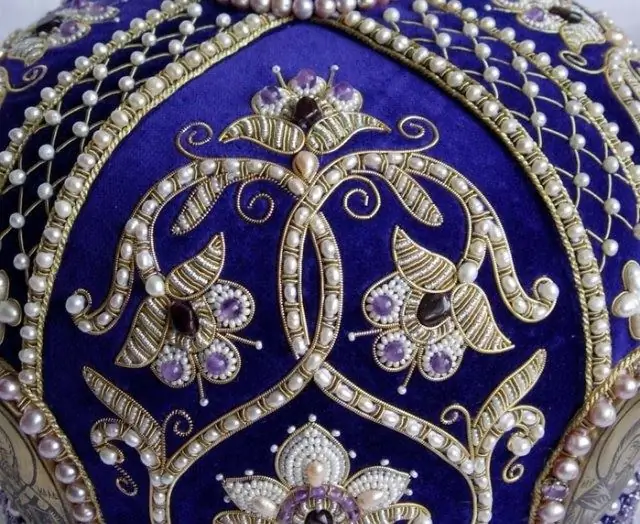- Author Nora Macey [email protected].
- Public 2023-12-16 10:17.
- Last modified 2025-01-23 08:47.
In the old days, the work of a seamstress was not easy, but respected. These craftswomen were able not only to skillfully sew clothes and accessories, but also to embroider. They knew how to decorate fabric with pearls and gold threads.

Instructions
Step 1
If for modern women needlework is a hobby, in the old days it was a vital necessity. But, as now, not every woman of the fair sex had the ability to sew, knit, embroidery and other primordially female occupations.
Step 2
Who was called a seamstress?
The ability to manually sew exquisite products from fine fabrics was highly valued in Russia. The craftswomen who mastered this art were called seamstresses. Not every woman could master this craft, as it required vigilance of eyes, quickness of fingers, non-standard thinking. The seamstress was engaged not only in sewing, but also in cutting clothes. This means that she had to be able to count and write, to imagine in her mind the image of the future model of clothing. But not only these craftswomen were engaged in it: they made underwear and bedding, interior accessories (curtains, curtains, capes, bedspreads, etc.).
Step 3
What was the work of a seamstress?
These women worked only with noble fabrics: brocade, taffeta, velvet. The seamstresses knew how not only to sew well, but to embroider skillfully. The art of decorating clothes with pearls and precious stones was especially appreciated. At all times of the reign of the kings, craftswomen lived at the court, making elegant clothes for the reigning persons and the nobility.
Step 4
In Russia, seamstresses also ordered outfits for the bride. These craftswomen had to know well the symbolism of the Russians and display it in their embroideries. Previously, each sign was important, since it provided a person with information about the gender, class, wealth of the owner of the clothes. The patterns embroidered by the craftswomen were a kind of letters that convey important information to those around them.
Step 5
The manufacture and embroidery of kokoshniks, scarves and other headdresses was also the prerogative of seamstresses. These products were adorned with pearls and skillfully painted with precious threads. The finds of archaeologists confirm that embroidery existed in Russia already in the 9th century of the last millennium. Fragments of clothing were found, decorated with intricate beautiful patterns, which are made with gold and metal threads. As it turned out, this is how noble Russians decorated their everyday clothes.
Step 6
Some craftswomen specialized in sewing underwear for noble people. This was not an easy task, as it was necessary to work with the finest fabrics and laces. The work of seamstresses was honorable and deserved respect. Until now, few people manage to learn how to handle a needle and thread as skillfully.

